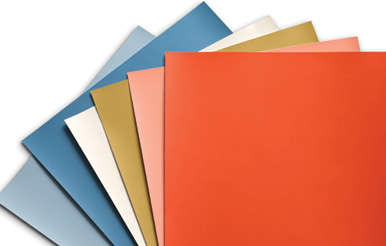Sue Wadden and design experts offer illuminating design advice on getting a cool, current look with this fun light form.
By Amanda Lecky
The glow of colorful neon signage has been lighting up North America since the early 1920s, when the technology first made its way across the Atlantic from France. But despite the popularity of neon in signage across the country through the 1950s — who can imagine Las Vegas without its neon skyline, for example? — the illuminated tubing fell out of favor until the 1970s, when artists embraced the waning form.
Designers and architects weren't far behind: In the 1980s neon took off indoors, glowing from ceiling coves, in Art Deco–inspired architectural accents and illuminated wall sculptures, often in cool shades of blue, purple or pink.
And now, neon is having yet another popularity spike — perhaps because 1980s style is the retro design of the moment. "The 1980s are a strong influence in emerging design this year — think strong geometrics, bold pattern and color, and graphic signage. Neon fits really well into this niche," says Sue Wadden, Director of Color Marketing for Sherwin-Williams. "And then there's all the word art out there right now, which gives neon a really current look."
"I give a lot of credit for neon's current 'hot' status to the artist Tracey Emin for generating a lot of awareness and interest in neon and in handwriting-style signs," says Jeff Friedman, owner of Let There Be Neon in New York City, perhaps the best-known neon studio in the world, and the fabricator of all of Emin's work.
Neon signage is an affordable, high-impact alternative to traditional art, say designers Shannon Wollack and Brittany Zwicki of Studio LIFE.STYLE. Design in Los Angeles. "We've used it in playrooms, office spaces and even a dermatology office." Beautiful and functional, neon works equally well in commercial and residential settings, and design industry media is full of examples, from a spectacular neon-illuminated walkway at Chicago O'Hare Airport to a single meaningful word hung in a bedroom.

But whatever your client’s taste (and budget), there are a few tips to keep in mind as you coordinate colorful neon tube lighting into a broader project palette:
The right paint color will make neon the star. For high drama, choose deep, dark wall colors that neon will light up, or bright colors that neon will intensify, Wadden says. Wollack and Zwicki prefer the clean canvas of white walls with neon signage.
Choose the correct sheen. "Choose a flat finish, so there's less reflection from the neon light," Wadden says. Sherwin-Williams Emerald Interior Acrylic Latex Paint comes in a true flat finish with exceptional coverage and washability.
Select the right shade of neon. "Pinks, reds, oranges, and whites look great in bedrooms, where they create a nice, warm glow," Friedman says. "Use warm colors anywhere you'll be eating or preparing food, and avoid yellow and green in bathrooms, where they'll cast an unflattering color on your skin," Wadden says.

Use a dimmer. Friedman, Wollack and Zwicki all recommend this simple convenience. Just be sure to buy one that's designed specifically for use with neon.
Take care with your design. "Neon can and does last for 50 to 70 years — it doesn't burn out like an incandescent bulb or a CFL, or dim like an LED," Friedman says. Since you'll likely have your neon lighting for a long, long time, choose a style that feels timeless, not too retro. And work with a fabricator or designer who can realize and improve on your vision, creating a true art form that you'll be happy to enjoy for the next half-century.










